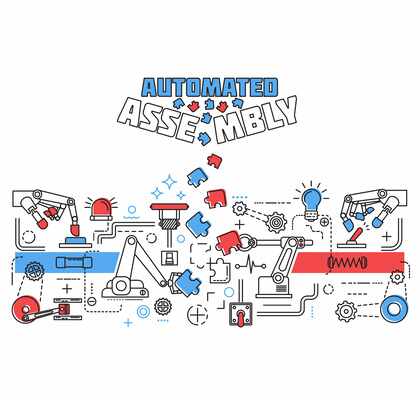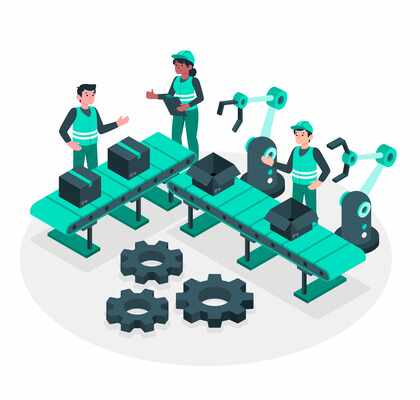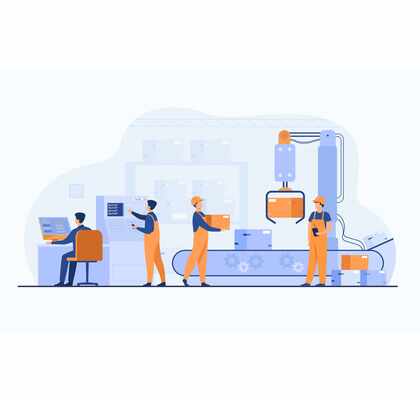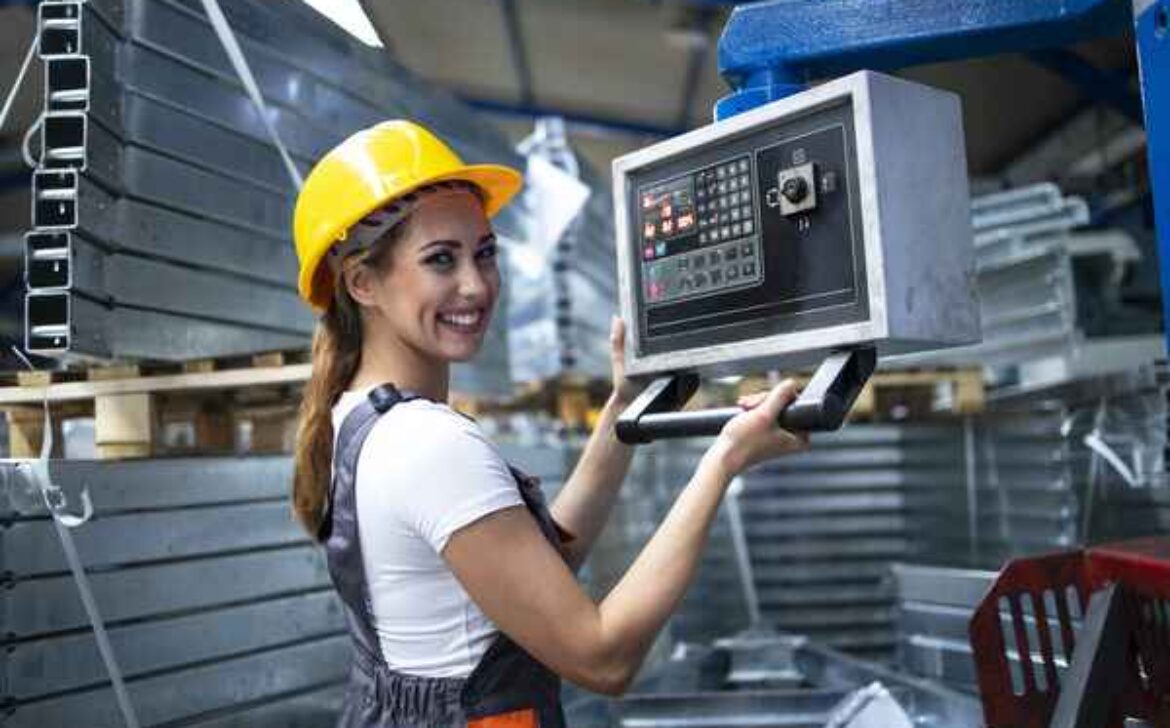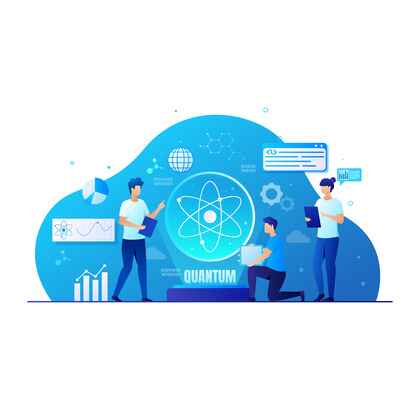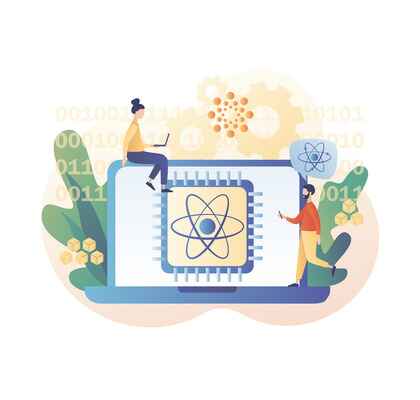From Assembly Lines to Smart Factories: The Evolution of Industrial Robotics
Introduction The manufacturing sector has undergone a transformation thanks to industrial robots, which is now a crucial component of contemporary production lines. Industrial robots are made to increase manufacturing efficiency, increase precision and accuracy, and automate monotonous activities. Industrial robots can carry out difficult operations quickly and accurately thanks to sophisticated programming, which has greatly decreased human error and raised product quality. By minimising waste and maximising efficiency, firms have been able to lower manufacturing costs and enhance revenues. By boosting their manufacturing capacities, this technology has also helped enterprises stay competitive in the worldwide market. Industrial robotics has also contributed to increased workplace safety by lowering the incidence of accidents and injuries brought on by dangerous or repetitive activity. Industrial robots are developing more intelligence, flexibility, and ease of use as a result of the quick breakthroughs in robotics and automation. Robots are now able to adapt to shifting production demands and make judgements in real time using machine learning and artificial intelligence. This has allowed firms to increase productivity, decrease downtime, and improve overall efficiency. Overall, industrial robotics have emerged as a crucial element of contemporary manufacturing, fostering innovation and allowing companies to stay on the cutting edge. Early Stages of Industrial Robotics: Robots that can be programmed to carry out monotonous or hazardous activities in industrial environments are known as industrial robots. They were first used in companies in the 1950s to complete activities including welding, painting, and assembly. Early industrial robots were expensive, bulky, and huge, and their use required highly trained workers. Technological developments over time have resulted in the creation of smaller, more cheap, and user-friendly robots, increasing their accessibility to manufacturers of all sizes. Industrial robots are now a crucial component of contemporary manufacturing, helping to increase effectiveness, productivity, and product quality. Industrial robots were originally used in factories in the 1960s, which is when the early use cases were first documented. George Devol and Joe Engelberger created the Unimate, the first industrial robot, in 1956. It was made to carry out repetitive jobs like welding, moving objects, and painting. In 1961, a GM company in New Jersey installed the Unimate for the first time. Due to the Unimate’s success, industrial robots have been widely deployed in the automotive sector to carry out activities that would be dangerous or challenging for people to complete. Although early industrial robots were bulky, expensive, and labor-intensive to programme, they were able to complete jobs more accurately and consistently than human labourers. Since then, the use of industrial robots has grown beyond the automobile industry to include sectors like electronics, pharmaceuticals, and food processing. There were several difficulties in the early use cases of industrial robots. The expensive price of the robots, which prevented all but a select few businesses from using them, was one of the key problems. Another issue was the limited adaptability and flexibility of the early robots, which were frequently made to do certain jobs and needed extensive reprogramming for any modifications to the production process. In addition, safety issues posed a significant barrier because the robots lacked modern safety features like advanced sensors. Workers who were worried about how automation might affect their jobs and the possibility of job relocation finally voiced their opposition. Early industrial robots were able to show their promise for enhancing productivity, efficiency, and quality in production processes despite these obstacles. Advancements in Robotics Technology: Industrial robots are now more effective and capable than ever thanks to developments in robotics technology. The development of sensors and artificial intelligence (AI) capabilities is among the most important developments in robotics technology. Robots are more adaptable and responsive to changing situations because to these developments, which enable them to perceive and adapt to their environment. The field of collaborative robots, or “cobots,” which are intended to operate alongside human workers, has also made considerable strides. Small and medium-sized businesses should adopt these robots since they are frequently more portable, lighter, and easier to programme than traditional industrial robots. Robotics technology has advanced as a result of the usage of 3D printing technology in robot manufacturing. Complex, specialised robot parts that can be created to fulfil particular needs can be produced via 3D printing. Robots are now better able to do complicated jobs in dynamic contexts because to developments in machine learning and computer vision technologies that have also enabled them to recognise and adapt to new conditions and things. Smart Factories: In order to increase production, efficiency, and flexibility, a smart factory is a highly automated, digitalized facility that makes use of cutting-edge technology like robotics, artificial intelligence (AI), and the Internet of Things (IoT). Data from every stage of the production process is gathered and analysed in smart factories using a combination of sensors, actuators, and software. Then, by utilising this data, operations are improved, downtime is decreased, and quality control and predictive maintenance are made possible. Real-time monitoring and control of processes in smart factories also enables increased agility and responsiveness to client requests. Overall, the idea of “smart factories” signifies a significant change in how production is carried out, one that has the potential to revolutionise the sector and open up new doors for development and innovation. A key component in the creation and implementation of smart factories is industrial robotics. To build a highly effective and adaptable manufacturing process, smart factories integrate cutting-edge technology like the Internet of Things (IoT), artificial intelligence (AI), and robotics. Industrial robots are the foundation of a smart factory because they offer the precision and automation required to optimise the manufacturing process. Industrial robots can save production costs, shorten production times, and enhance product quality in smart factories. Robots in smart factories include sensors that let them interact with one another and with other machines in the assembly line, resulting in a smooth and coordinated manufacturing process.
The next generation of robots is not going to be about replacing humans. It’s going to be about amplifying and augmenting human capability.
– Rodney Brooks Industrial robotics technology is constantly developing, and it is anticipated that its importance in smart factories will increase as new technologies like collaborative robots are developed. Manufacturers may gain a lot from smart factories and industrial robotics, including improved productivity, precision, and efficiency. Advanced robotics today makes it possible to rapidly and correctly execute jobs that used to take a lot of time and labour. Robots can operate continuously, cutting down on downtime and boosting output. Additionally, they can carry out risky or tough jobs that might otherwise be too dangerous or physically demanding for human workers, hence enhancing workplace safety. Additionally, real-time monitoring of production processes is made possible by smart factories, allowing businesses to swiftly spot and fix problems. As a result, there is less waste and downtime, which ultimately saves money. Because robotic systems can swiftly adjust to changing product demands, smart factories also offer the possibility of increased personalization and flexibility in production. Industrial robotics and smart factories are therefore gaining popularity in modern manufacturing and giving enterprises who adopt them a competitive advantage. Industrial Robotics and the Future of Manufacturing: Manufacturing has been altered by industrial robotics, becoming quicker, safer, and more effective. Industrial robotics has been developing quickly as a result of technological developments, transforming how factories run. Modern robots are more intelligent, quick, and competent than ever before because to advancements in robotics technology. A wide range of jobs, including assembly, painting, packaging, inspection, and welding, can now be completed by robotic systems. Because of their high levels of precision and accuracy, manufacturers are able to develop items that are more consistent and of higher quality. Industrial robots’ future holds even more revolutionary developments. Robotics technology is being merged with smart sensors, cloud computing, and artificial intelligence (AI) as a result of Industry 4.0 and the Internet of Things (IoT). Because of this integration, intelligent factories that require little to no human input now exist. Data analytics, machine learning, and predictive maintenance are just a few of the tools smart manufacturers use to streamline the manufacturing process. Smart factories are able to increase efficiency, output, and time-to-market with the use of robotics. This revolution is being led by industrial robotics, and it is anticipated that this technology will continue to be essential in the development of manufacturing. Conclusion: In conclusion, industrial robots has advanced significantly from the early days of assembly line labour to the modern smart factories. Robotics technology has transformed the manufacturing sector by boosting productivity, cutting costs, and enhancing quality assurance. Robotics technology improvements have made it possible to create sophisticated systems that are capable of carrying out a variety of activities, from straightforward machines to complicated robots. The importance of robotics in manufacturing is expected to increase with the development of smart factories. A new era of intelligent automation is being fueled by the combination of robotics technology, big data analytics, and artificial intelligence. This improves production efficiency and precision while allowing businesses to react swiftly to shifting consumer needs. However, there are worries regarding the potential replacement of human workers as robotics technology is increasingly used in industry. Thus, it is crucial for decision-makers and business pioneers to create plans that address the effects of automation on the workforce.